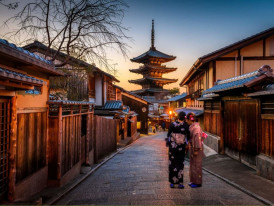
Essential Things You Need To Know When Traveling to Kyo
Kyoto has a long history; it was the capital of Japan for more than one thousand years, and although this is no longer the case, much of the city’s history and culture has lasted until this day. It’s a truly beautiful and unmissable city when traveling in Japan. As well as its ancient Buddhist temples, iconic flame colored Shinto shrines and mysterious geisha districts, part of Kyoto’s magic comes from the ease with which it changes with the seasons. The weather in Kyoto can define the mood of the city, whether it’s snowflakes drift down into Zen gardens and the small courtyards of traditional teahouses, or sakura are in full bloom and the city is water-colored in pastel pink hues. Although any Kyoto travel guide will tell you about the sights you can’t miss, there are several Kyoto travel tips that they leave out. So if you’re traveling to Kyoto, looking for Kyoto travel tips, or some general tips for travelling in Japan, then these are the things you should know.
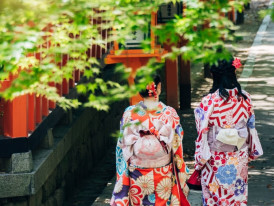
Decide where you want to go before you arrive
Decide where you want to go before you arrive
If you are traveling to Kyoto and planning to leave everything to the last minute, or do things spontaneously, you might want to reconsider. It’s possible to do some city sightseeing spontaneously, but one of the best Kyoto tips to take to heart is to do a bit of planning with a good Kyoto travel guide. There are literally thousands of temples and shrines to visit, more eateries than you could visit in a lifetime - and also thousands of tourists. If there are experiences you’ve been dreaming of, like perhaps a traditional tea ceremony, you’ll thank yourself for doing a little research and planning ahead. As well as this, Kyoto’s mountainous layout can waste a lot of time if you don’t know where you’re going, so spend some time planning your routes, where to eat in Kyoto, and what you want to do so you can make the most of your time! This being said, getting lost in Kyoto can be a beautiful experience in itself, with so many mysterious streets, moss covered shrines and peaceful gardens to discover.
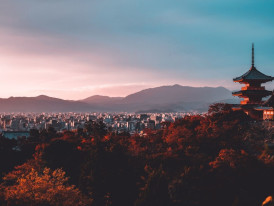
Check the weather, and dress appropriately
Check the weather, and dress appropriately
The weather in Kyoto is highly seasonal, with hot summers and freezing winters. So to avoid discomfort, it pays to bring several layers, and a warm jacket from October onwards. In January and February it often snows, and so you’ll need to bring suitable winter clothing. Whilst from mid May until June, you can get away with half sleeves and a cardigan or jacket, during the summers it’s often very hot and humid, so you won’t need to make space for extra layers when you pack! This being said, during certain times of the year a single week can be the difference between hot and cold, so check the weather carefully and pack accordingly.

Consider going in the off season
Consider going in the off season
Among the most important stuff to know before travelling to Japan is when to actually go. Kyoto attracts thousands of tourists each year, and this can impact on your trip - especially if you’re the kind of person who hates to travel with crowds. And since this is one of Japan’s smaller, yet most visited cities, if you go in the middle of peak tourist season (from April to May), you might not be met with the authentic and immersive experience you were hoping for. It’s also good to check when ‘Golden Week’ is - late April to early May - as this is Japan’s biggest travel week and thousands of visitors from all over the country will be traveling at this time too. Conversely, the off season (early spring or fall) will allow you to visit many of the top Kyoto attractions, without having to fight through crowds as thick as you’ll find at Tokyo’s Shibuya Crossing. Consider how busy Kyoto will be before you book, and if you have the option to visit outside of peak travel times, do so!
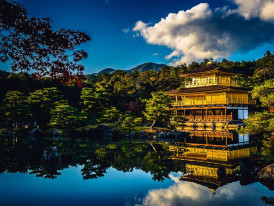
Getting around
Getting around
Kyoto's transportation system is complicated, and ironically enough, some locals complain that there are too many buses. At the very least, it’s easy as a tourist to be confused by the bus system, especially when you throw in the fact that most international visitors can’t read a word of Japanese. It is possible to hop aboard one of the city’s trains, but these can leave you some distance from the main tourist hotspots, and driving is not recommended either as the roads are quite narrow, with taxis and all those buses are often at a stand still. And to top it all, although the historic districts of the city are easily appreciated on foot, it won’t be an option to walk everywhere. So if you’re travelling to Kyoto and want to reduce time and money spent on getting around, your best option is to use the underground system and along with buses. You can buy one day pass for this option, which can save you time and money.
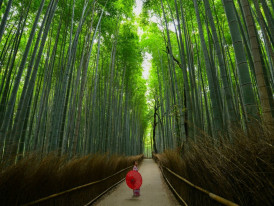
Bring comfortable shoes
Bring comfortable shoes
Kyoto is large, and even if you plan carefully and use public transport you’ll inevitably end up doing a lot of walking. So like your mum probably said, a good pair of comfortable walking shoes can make all the difference! The city is full of surprises, and there are few activities more rewarding than getting lost on mysterious side streets or exploring quiet alleyways - provided your feet are comfortable, that is.
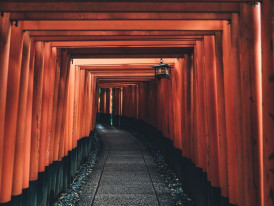
Picking where to stay
Picking where to stay
Choosing where to stay in Kyoto can be the difference between an incredible trip, and one that’s perhaps less so incredible. If you plan to visit several places outside of the city center, your best option is to stay around Kyoto station or Shijyo. These Kyoto neighborhoods are relatively central and offer good access to everywhere. However, if you want to explore a particular area, or if you plan to go to the particular ryokan (traditional Japanese inn), it pays to consider travel time - you might end up spending more time and money due to traffic jams and tourists. Still, there are options around the city to suit most budgets and tastes - you can stay at five star hotels or hostels, or even a traditional ryokan.
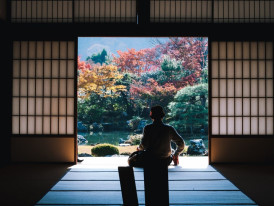
Eating in Kyoto
Eating in Kyoto
Kyoto is about more than breathtaking temples and shrines - the cuisine is equally enticing. There are several types of foods visitors to Kyoto must try, including the intriguing kawadoko style of restaurant, which is popular during summer. If you’re visiting between May and September, don’t miss this magical experience, where the floor of a restaurant is suspended above a river and you dine seated on the floor, with the tranquil sound of water flowing over the rocks below. Also not to be missed is Nishiki Market, which is affectionately known as “Kyoto’s Kitchen”, and is undoubtedly the best street food market in Kyoto. With more than a hundred small shops and restaurants in this shopping streets, you could spend hours ambling along and trying different Japanese specialties, like takoyaki, fried octopus balls served with intriguing sauces and various other toppings.
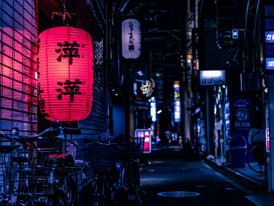
Lunch is the best-value meal of the day
Lunch is the best-value meal of the day
But if you’re traveling on a budget but don’t want to skimp on trying local dishes, plan to eat out at lunch! The delicious multi-course meals served in Kyoto are often available at both lunch and dinner, but many restaurants serve sampler menus during the day. These are often served in traditional bento boxes and are an experience all of their own - plus it’ll help you save a few yen. And the best dessert in Kyoto to enjoy after lunch? Traditional shaved ice from Tasuki, an artisanal shaved ice shop famous for their monthly changing flavors.
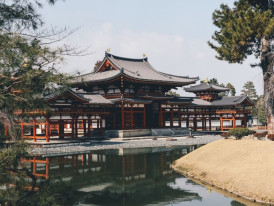
Some attractions are free to enter
Some attractions are free to enter
Kyoto is known as the City of Temples for good reason - it’s often said there are over 1600 temples and 400 shrines. So of course, for many visitors, discovering some of these are a major reason to visit the city. And the good news is that most of these are totally free to enter, including the most famous like Yasaka Shrine and Fushimi Inari Taisha Shrine with its iconic red torii tunnel. There are also several free attractions to choose from, but among the most popular are Arashiyama Bamboo Grove and the Kyoto Imperial Palace. If you’re traveling on a budget, and just want to get a taste of the city, you can’t go wrong with combining the city’s many free shrines and temples with people watching and parks.
Holey coins are good to bring along
One of the intriguing things to know about Japanese culture is that coins with holes in them are revered and considered good luck, particularly when praying at shrines and temples. So if you’re looking for good luck, or simply want to respect this aspect of Japanese culture, then bring a pocketful of these to donate to the prayer boxes you encounter.

